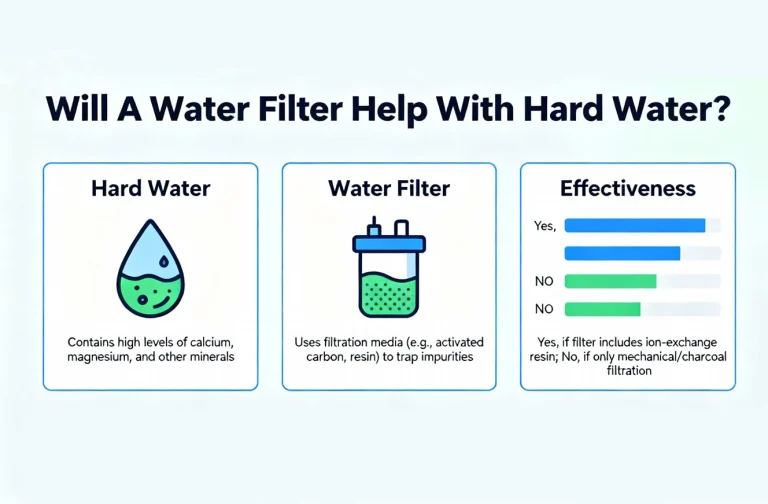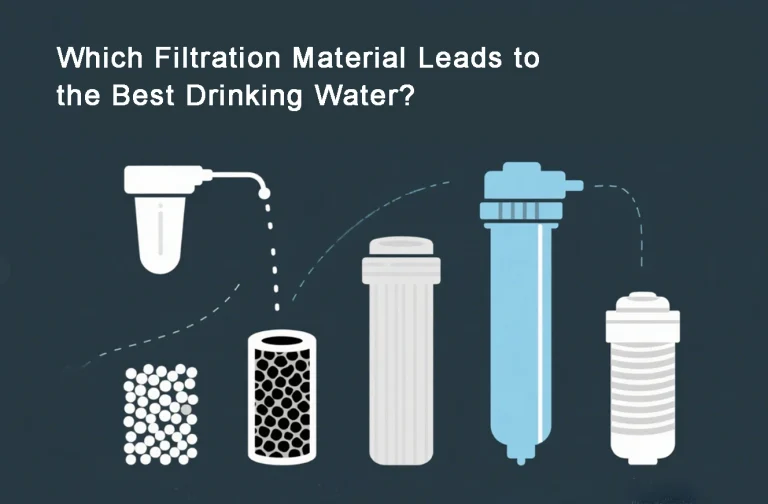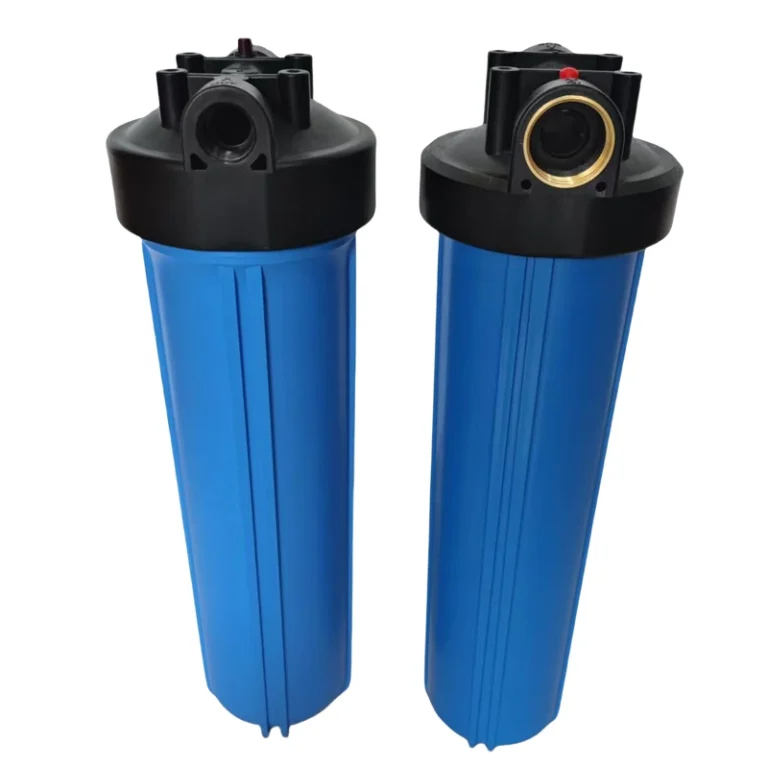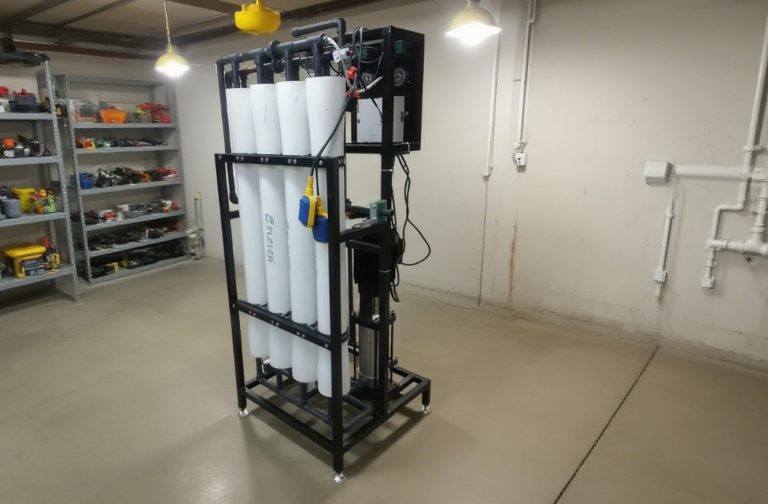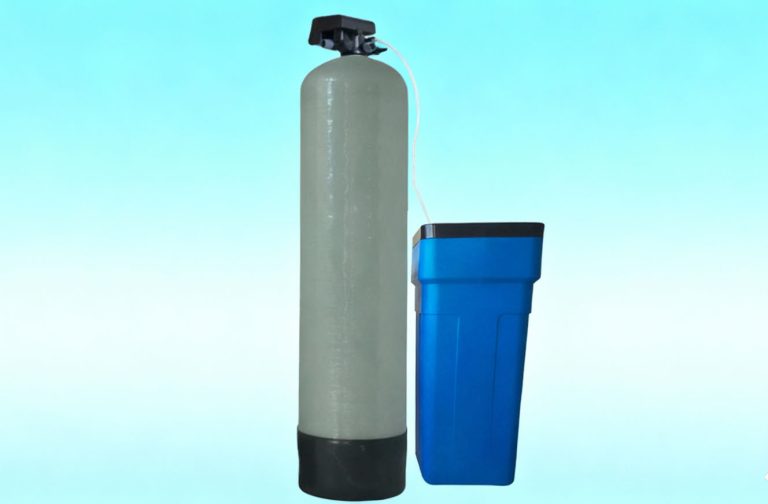BasideWT- Whole Home Water Filtration System & Replacement

How Does a Watermaker on a Boat Work?
How Does a Watermaker on a Boat Work? It uses a high-pressure pump to push seawater through a reverse osmosis membrane, removing salt and providing fresh water.
The Core Principle: Reverse Osmosis Desalination
Simply put, a boat watermaker works by removing salt and impurities from seawater. But how is this achieved? The answer lies in a sophisticated process called Reverse Osmosis (RO).
To understand reverse osmosis, we must first grasp osmosis itself. Osmosis is a natural process where water moves through a semi-permeable membrane from a less concentrated solution to a more concentrated one. In other words, freshwater would naturally flow into saltwater to balance the salinity.
Reverse osmosis, as the name implies, reverses this natural flow. It uses high pressure to force seawater against the membrane. This membrane has extremely tiny pores, small enough to allow water molecules to pass through but block larger molecules like salt, minerals, viruses, and bacteria. Consequently, the system produces two streams: pure, fresh potable water and a highly concentrated brine solution that is discharged back overboard.
Deconstructing the System: Key Components of a Marine Desalinator
A marine desalination unit is more than just a membrane. It is a integrated system of crucial components, each playing a vital role.
The High-Pressure Pump: The Heart of the Operation
This is the engine of your freshwater generator. Its sole job is to create the immense pressure required to push water through the RO membrane. Most systems require pressure between 800 and 1,000 psi (pounds per square inch). This pump is typically a durable, plunger-style pump, often driven by an AC or DC electric motor, or sometimes directly by a hydraulic motor or the boat’s main engine.
The Reverse Osmosis Membrane: The Brains of the Outfit
Think of the membrane as the magic filter. It is a cylindrical element housing spiral-wound, semi-permeable material. This is where the actual desalination occurs. Its quality and condition directly determine the purity and taste of your product water. Regular maintenance and replacement are essential for optimal performance.
Pre-Filtration: The First Line of Defense
Before seawater ever reaches the high-pressure pump or the delicate membrane, it must be cleaned. Pre-filters, usually sediment filters, remove larger particulates like sand, silt, and organic matter. This step is critical; it protects the pump from abrasion and prevents the membrane from becoming clogged or fouled prematurely.
The Energy Source: Powering the Process
How do you generate the necessary power? Options vary. Many systems use the boat’s alternating current (AC) power via a generator or shore power. Others are designed for direct current (DC), running directly off the boat’s battery bank, which is ideal for solar-powered or energy-conscious vessels. Some larger systems can even be powered hydraulically by the main engine.
Post-Treatment and Storage: Ensuring Purity
The water exiting the membrane is incredibly pure—almost too pure. It can be slightly acidic and flat-tasting. Therefore, many systems include a post-filter, often a carbon filter, to remineralize the water slightly and improve its taste before it flows into the boat’s fresh water tanks.
From Sea to Tap: A Step-by-Step Operational Breakdown
Let’s trace the journey of a single drop of water through the system.
Intake: Seawater is drawn into the system through a through-hull seacock, equipped with a strainer to block large debris.
Pre-Filtration: The raw seawater passes through the pre-filter cartridge, trapping suspended solids.
Pressurization: The high-pressure pump then takes this pre-filtered water and pressurizes it to the required 800-1000 psi.
Separation: The pressurized water is forced into the RO membrane vessel. Here, it separates into two streams: permeate (the fresh product water) and brine (the concentrated waste water).
Freshwater Delivery: The permeate is tested for quality by a salinity monitor. If it’s within safe limits, it is sent to a drinking water hose for storage.
Brine Discharge: The brine, now about twice as salty as ocean water, is safely discharged overboard.
Storage: The freshly made water is piped into the boat’s storage tanks, ready for use.

Manual vs. Automatic Systems: Finding the Right Fit
Watermakers come with varying levels of automation. Which one is right for you?
Manual Systems: These require the operator to manually control key functions. You must adjust the pressure valve while monitoring the production rate and salinity. However, this offers a hands-on understanding and is often more affordable.
Fully Automatic Systems: These are the set-and-forget models. They feature microprocessors that auto-adjust pressure, manage back-flushing cycles, and monitor performance. They automatically shut down if the water quality drops. For convenience and ease of use, automatic systems are unparalleled.
Installation, Maintenance, and Troubleshooting Essentials
Owning a watermaker is a commitment. Proper care ensures longevity and reliable performance.
Installation Considerations: Key factors include choosing a cool, dry, and well-ventilated location. You must ensure a clean, dedicated raw water intake and secure mounting for the heavy pump. Professional installation is often recommended.
Routine Maintenance is Non-Negotiable! A neglected watermaker will fail. Your maintenance checklist should include:
Fresh Flushing: After every use, you must flush the system with fresh water to remove salt. This prevents corrosion and biological growth.
Pickling: If you won’t use the system for more than a week, you must “pickle” it by circulating a preservative solution through the membranes.
Filter Changes: Pre-filters need frequent inspection and replacement, sometimes after every 50-100 hours of operation.
Membrane Replacement: The RO membrane is a consumable item. With proper care, it may last 3-5 years, but its output and quality will gradually decline.
Common Problems: What issues might you face? Common complaints include low pressure (often a pump issue), high salinity (a sign of a damaged or fouled membrane), and low output (from clogged filters or low feed water temperature).
Choosing Your Marine Water Purification System
Selecting the right unit depends on your specific needs. Ask yourself these questions:
What is your daily water consumption? Size your system to produce more than you typically use.
How is your boat powered? A boat with a large generator can handle an AC system. For energy-independent cruisers, a DC watermaker is a must.
What is your available space? Systems can be modular or compact. Measure your space carefully.
What is your budget? Consider both the initial investment and long-term maintenance costs.


